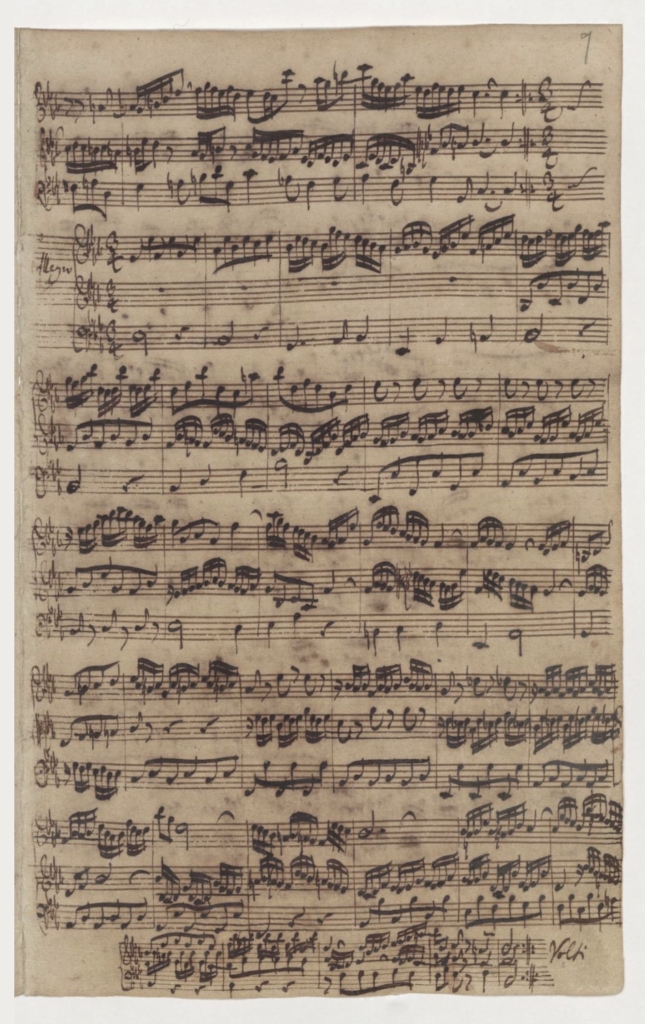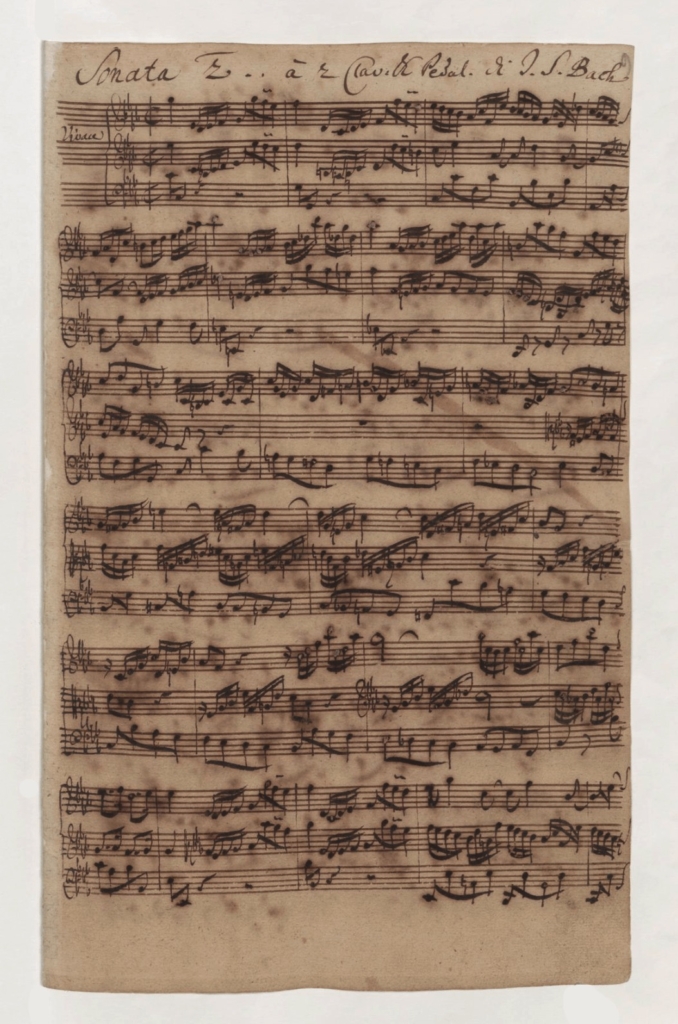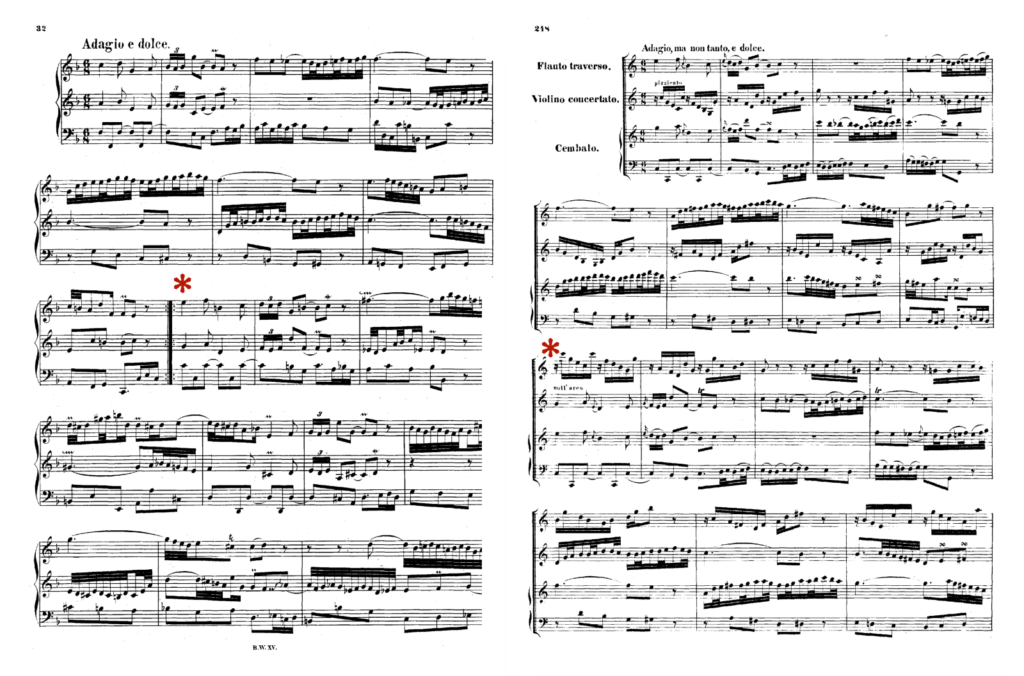
Part 2: Sonatas 1-3
Perky in its outer two fast movements, wistfully melancholy in the middle slow movement, Sonata 1, BWV 525, also survives in a contemporary manuscript as chamber music. The arrangement for violin on the top melody, obbligato cello for the middle line, and harpsichord continuo on bass was likely an unauthorized orchestration assembled by people for whom that was how they could play it themselves. Our own unauthorized version cashes in on the contrasting moods by employing two treble-range instruments—violin and recorder—to carry the upper lines, supported by cello and the two continuo instruments on bass.

525. Autograph manuscript from Berlin:
Staatsbibliothek zu Berlin.
Here is what the third movement sounds like in its organ version followed by ours. This, and all other audio samples, comes from Tempesta di Mare’s recording of all six Bach trio sonatas on Chandos Records, CHAN 0803.

Opening of Organ Sonata II, BWV 526. Autograph manuscript from Berlin: Staatsbibliothek zu Berlin.
By contrast, the vibe of Sonata 2, BWV 526, more than any other sonata in the set, suggests using matched instruments, not just in range but in family too. This is because the two treble parts sound in note-for-note harmony with one another at such a pace that any imbalance of timbre or volume would undermine a highwire choreography on par with a murmuration of starlings. We chose two violins, supported by cello with just lute—no harpsichord—to keep the violin-family color forward in the texture (as a footnote, Mozart also arranged the second and third movements of this sonata as an all-strings trio for violin, viola and cello, repackaged as Prelude and Fugue number 5, Köchel 404a).
And, because it’s magical, enjoy this murmuration of starlings captured by a Youtube videographer.
Sonata 3, BWV 527 has a surviving chamber counterpart for its middle movement in the Triple Concerto in A minor, BWV 1044. In the concerto, the solo harpsichord plays the bass and one of the melodic lines while the accompanying flute and violin alternate between playing the other melodic line and simple arpeggios, absent in the organ version. We have loosely taken our cue for orchestrating the sonata from the concerto. In our version, we have kept Bach’s idea of contrasting wind and string instruments for the upper parts, but they play those lines exclusively. The harpsichord, with its quick decay, plays the arpeggios and bass. But we have substituted a viola da gamba for the violin. The natural acidity of its tone lends the sonata a tannic edge befitting a melancholy on par with John Dowland.

The asterisk in the organ version corresponds to the point in the concerto similarly marked. At that stage, the organ goes back to the beginning, whereas in the concerto the flute and violin exchange roles.
